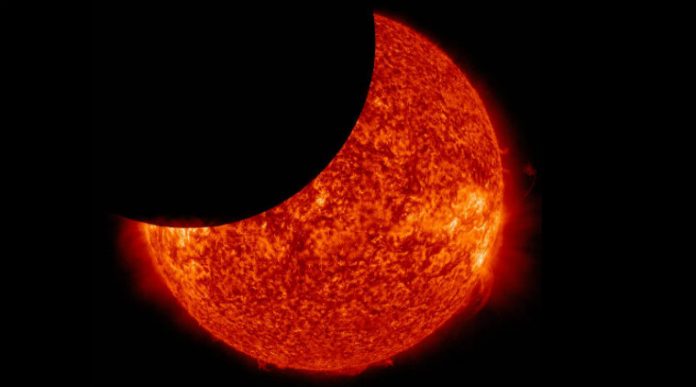Solar Eclipse 2018: A partial solar eclipse is set to occur on February 15, which will be visible in certain paths of the Southern Hemisphere. Here are the details, date, and timings about the Solar eclipse. This celestial phenomenon can be seen over Antarctica, southern parts of the Atlantic ocean and southern South America. India will not get to witness this partial solar eclipse. There is another solar eclipse on August 11, 2018, but that too will not be visible in India.
A solar eclipse occurs when the moon comes in the orbit between the Sun and the Earth and appears to cast a shadow on the Sun. In a partial solar eclipse, the moon, Earth, and Sun are not exactly lined up, but some part of the moon does cast a shadow on the sun’s surface. In a total solar eclipse, the moon block’s the sunlight from reaching planet Earth and it goes dark for the minute or so when this phenomenon takes place.
Partial solar eclipses tend to occur every six months or so, however, a total solar eclipse is a rare celestial event. The last total solar eclipse was visible to the entire US mainland on August 21, 2017. NASA advises it is never safe to look directly at a solar eclipse, whether it is a partial or total lunar eclipse.
Solar Eclipse February 15, 2018: Where will it be visible?
The February 15 partial solar eclipse can be completely witnessed from Antarctica, east of Antarctic Peninsula, which is home to most research bases. Scientists in proximity to the South Pole will be able to gaze through the entire eclipse. Those living south of the Argentine city of Rio Gallegos, and in the Falkland Islands, will be able to view the entire phenomenon before sunset.
The countries from where the partial solar eclipse can be seen are Argentina and Chile, along with the southernmost parts of Paraguay, Uruguay, and Brazil. According to the reports, this partial solar eclipse will be visible for close to 2 hours, with the event expected to start at 5.43 pm local time in the Antarctic peninsula, and end by 7.34 pm.
When viewing a solar eclipse, partial or total, people must observe precautions, as these phenomena direct undue radiation toward the earth. Star-gazers should choose a pinhole camera to catch this event, while those capturing images and video must consider solar filters for their devices.
The year will see two more partial solar eclipses which are expected for July 13 and August 11 respectively. On July 13, the Sun would appear crescent-shaped over Australia and Antarctica, while the August 11 will play over the North Pole, northern Europe, and parts of northern and eastern Asia.














